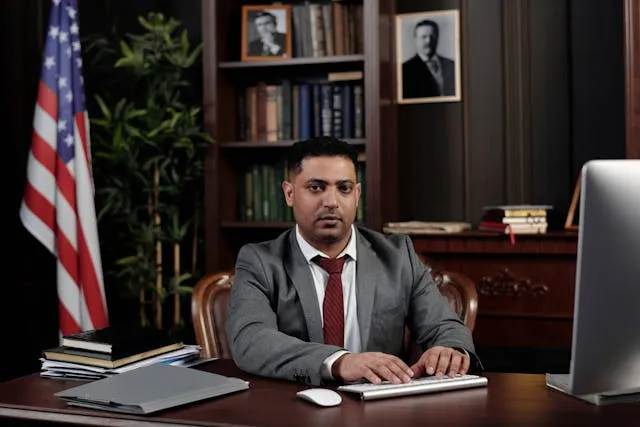Behind the Scenes of a Leader’s Rise in Indian Politics

In the world’s largest democracy, Indian politics is far more than campaigns and speeches — it’s a high-stakes journey of vision, struggle, and perseverance. Behind every popular face you see on television lies an untold story of sleepless nights, deep strategy, and years of public service. The rise of a leader in Indian politics doesn’t happen overnight; it’s built on courage, guidance, and a deep understanding of people’s hearts.
Also Read: Thomson’s Casa Menu Breakfast, Curries, and Biryanis
The Early Foundations of Political Vision
Every great political journey begins with a vision. For most Indian leaders, politics starts at the grassroots level — through student unions, social movements, or local governance. These early days shape the core beliefs and leadership style that define their careers.
Leaders like Indira Gandhi and Atal Bihari Vajpayee didn’t emerge by accident; they evolved through years of dedication, learning, and public service. The same holds true for regional powerhouses who began their journeys in villages and towns before reaching national prominence.
These experiences allow leaders to connect emotionally with citizens, understanding their struggles from firsthand encounters rather than distant observation.
Mentorship and Political Grooming
Behind every political success story lies a mentor — someone who guides, shapes, and supports the leader through the maze of political systems. Mentorship in Indian politics is not only about advice; it’s about strategic grooming.
Young politicians spend years learning from seniors, understanding public psychology, and developing diplomatic communication. Political grooming happens quietly — in closed meetings, party offices, and long car rides to rallies — where experience is passed down from one generation to another.
The Strategic Use of Image and Personality
In modern Indian politics, public image is everything. From attire and gestures to the tone of speech, every aspect of a leader’s presentation is carefully crafted. Teams of communication experts, media strategists, and digital managers work behind the scenes to maintain an authentic yet powerful image.
A politician’s rise often depends on how relatable and trustworthy they appear to citizens. Social media platforms have made this even more crucial. Behind every viral clip or emotional speech lies hours of preparation, scripting, and image management.
Building Grassroots Connections
No leader can rise without grassroots support. This is the heart of Indian politics — the connection between the politician and the common citizen. Successful leaders spend years visiting rural areas, listening to farmers, addressing youth concerns, and supporting local initiatives.
These face-to-face interactions build emotional trust that no advertisement can buy. Behind the scenes, political workers, volunteers, and local influencers play vital roles in maintaining this connection, ensuring the leader remains grounded and visible among the people.
Political Strategy and the Art of Timing
A critical element behind any leader’s success is strategic decision-making. Timing — when to act, when to speak, and when to stay silent — defines political maturity. Behind closed doors, leaders rely on data analysts, researchers, and advisors who assess public sentiment and voter behavior.
Campaigns are often planned months or even years in advance, and every statement is tested for impact. A single misstep can change the course of a political career, which is why every move is calculated carefully.
Balancing Ideals with Pragmatism
True political leadership lies in balancing ideals with pragmatism. While citizens respect moral conviction, governance requires negotiation and flexibility. Behind the scenes, political leaders often make tough choices — forming coalitions, adjusting policies, or compromising for the greater good.
This delicate balance between ideology and practicality defines long-term success. Leaders who can adapt while staying true to their principles tend to last longer and inspire deeper loyalty.
The Role of Family, Legacy, and Loyalty
In India, politics often intertwines with family and legacy. Dynastic politics continues to influence many states, but even in such systems, individual merit and loyalty remain decisive.
Take the example of K. Chandrashekar Rao (KCR) — a seasoned leader known for his strong regional identity and leadership in Telangana. His rise reflects years of strategic planning, organizational strength, and people-first politics. Many political analysts studying kcr age and his career trajectory note how experience and wisdom continue to shape his leadership decisions.
Behind such success are families and loyal supporters who manage schedules, campaigns, and the emotional strain that comes with public life.
Challenges, Sacrifices, and Emotional Resilience
A political leader’s journey is filled with sacrifices and setbacks. The constant scrutiny, long working hours, and pressure to perform make politics one of the most demanding careers.
Behind the scenes, leaders often deal with personal challenges — missing family events, facing criticism, and handling betrayal. The emotional resilience to stay focused despite controversies and opposition defines their strength. True leaders transform challenges into motivation, using criticism as a tool for growth.
Media, Perception, and Public Relations
The media plays a dual role — a mirror and a magnifier. Leaders must handle interviews, press conferences, and online narratives with precision. Each appearance is backed by days of preparation.
Behind every confident sound bite or spontaneous smile, there are teams managing lighting, body language, and speech rhythm. Political communication today is as much science as art — blending authenticity with storytelling to win hearts.
The Defining Moment of Recognition
Every leader’s rise culminates in a defining moment — when their message resonates with the people. This recognition often comes after years of effort, not just through election victories but through the trust earned over time.
When citizens begin to view a leader as a symbol of stability and change, their leadership truly takes root. The unseen labor — strategy sessions, community visits, mentorship, and sleepless nights — finally turns into visible success.
Lessons from the Journey
The journey behind a leader’s rise in Indian politics offers timeless lessons. Patience, communication, empathy, and adaptability are essential traits. Whether it’s managing crises, engaging with citizens, or uniting divided factions, each decision contributes to a larger vision of progress.
True leadership is not about titles or power — it’s about impact. Behind every great political story lies a person who dared to dream big and serve selflessly.
Conclusion: The Silent Strength of Leadership
The rise of a political leader in India is a story of unseen effort, human connection, and enduring faith. While the public witnesses grand rallies and inspiring speeches, the real transformation happens away from the cameras — in moments of planning, reflection, and humility.
From student activists to national icons, leaders emerge through persistence, wisdom, and the unwavering belief that change begins one step at a time.
Behind every political victory, there’s a story written not in speeches, but in sweat and sacrifice — the untold, powerful story of what it truly means to rise in Indian politics.
